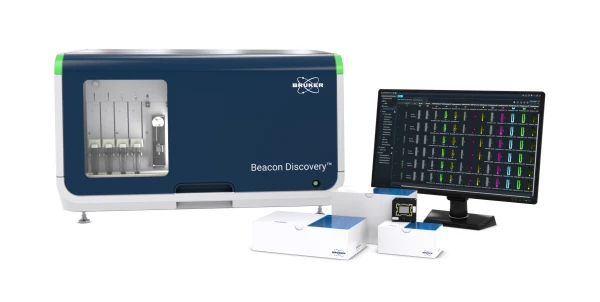8 Steps in Cannabis Processing and Analytical Testing
Interest in cannabis for medicinal and recreational uses has skyrocketed, and the markets for available cannabis related drugs has evolved to try and keep pace. Accordingly, there are vast opportunities for analytical laboratories in the processing, purification, potency testing, and quality control stages of cannabis drug production.
Raw Material Processing
Natural cannabis compounds are extracted from raw plant material, tested for potency, and screened for a range of contaminants including: pesticides, residual solvents, heavy metals, moisture, and microbes. All of these stages in production involve preferred methodologies, although none have been standardized due to the lack of universal state and federal cannabis testing regulations. Analytical instrumentation manufacturers are, however, helping cannabis testing laboratories with sample preparation protocols, method development, and establishing good laboratory practices (GLP) to ensure state environmental and food safety laws are met or exceeded.
Extraction
The initial stage in processing, following growth procedures, involves drying and extraction -- the latter commonly involving treatment with solvents such as petroleum hydrocarbons, subcritical or supercritical CO2, or alcohols. This step is followed by evaporation, yielding a pure and potent concentrate which can be further processed to assess content of individual cannabinoids, terpenes, and contaminants.
Extraction with petroleum hydrocarbons is fast and effective, however, the process can result in a substantial amount of the solvent remaining in the concentrated product – roughly equal to the total content of terpenes.
Supercritical and subcritical CO2 are effective, clean, and safe extraction techniques that are also slow, complex, and expensive. These methods can result in high yield and quality, although they can involve large expensive equipment and rigid operating conditions.
Alcohol extraction is a fast, effective, and clean method. The use of alcohols is very attractive as they have low toxicity and good solvent properties, although solvent removal can be energy intensive due to the decreased volatility.
Potency testing
Cannabis analytical testing laboratories typically quantitate 8-12 medically relevant cannabinoids, and can perform analysis on up to 3,000 unique terpenes – aromatic compounds with additional proposed therapeutic qualities. The cannabinoids are separated and quantified using high (or ultra high) performance liquid chromatography (HPLC or UHPLC). Either gas chromatography (GC) or mass spectrometry (MS) is also employed depending on the requirements of the analysis.
Testing by HPLC in this context does not typically involve heat treatment, and can therefore provide a more accurate determination of the actual amounts of both carboxylated and decarboxylated forms in the samples – carboxylated THCA has distinct bioactive characteristics from THC. Alternatively, GC, and the associated heat treatment, results in complete decarboxylation of THC in a process known as total THC analysis.
The potency of cannabinoids such as THC can vary significantly due to differences in plant strains, growth conditions, and extraction methods. This can range from 5-25%, although levels much higher can be achieved. Quantitative accuracy will continue to improve as high quality chemical standards of known potency become available.
Pesticide testing
Pesticides are used largely in commercial cannabis growing operations to kill insects and spiders that may impact quality and yields. Unfortunately, many pesticides are carcinogenic and mutagenic, threatening serious harm to cannabis consumers, particularly immune-compromised medicinal cannabis users.
Platforms for pesticide testing include either GC-MS or liquid chromatography triple quadrupole mass spectrometry (LC-MS), and new instruments coupled with pre-configured methods are used for this application. Existing instruments and methods can be adapted for this purpose provided the sensitivity and limits of detection are suitable, although, specific method development is required to match the range and throughput of a given lab operation.
Residual solvents
The extraction process sometimes leaves residual solvents in the concentrated cannabis extract. The result is the persistence of chemicals that are harmful for human consumption. It is therefore important to verify their presence in order to guarantee a safe and chemical-free product for use. GC is the preferred instrumentation for detection and quantitation of a wide range of solvents – with sensitivity and instrument performance matched for a given lab.
Heavy metals, moisture, and microbes
Metals are often found in soil and fertilizer, and can be absorbed by cannabis plants during growth. Analytical testing for metals such as: lead, cadmium, arsenic, and mercury; can ensure the product is free of theses contaminants and safe for consumption. There are several ways to measure the presence of metals, all involving acid treatment and digestion. Inductively Coupled Plasma Mass Spectrometry (ICP-MS) provides the sensitivity needed without requirements for additional sample processing steps and hardware. Atomic Absorption Spectrometry can also be used for this testing purpose.
Moisture is another factor that, when in excess, can lead to the growth of mold and other harmful substances. The moisture content of cannabis can be determined by use of an analytical balance with heating module or moisture balance. The ideal growth conditions for cannabis are also ideal for the growth of potentially harmful bacteria and fungi. Therefore, each harvest must be screened through the use of qPCR and MALDI-TOF analysis, if possible. Mycotoxins, such as aflatoxin and others, can be also detected by LC-MS.
Several companies now offer dedicated instruments for cannabis potency testing which are meant to streamline processing and harmonize analytical testing among laboratories. As well, there is a significant aftermarket for new and used LC systems which can be implemented and optimized for cannabis compound testing. Accordingly, there are highly reputable vendors that sell new, used, and refurbished equipment, along with hardware, components, and service programs. Look for upcoming articles and resources that will highlight these manufacturers, vendors, and technologies.











